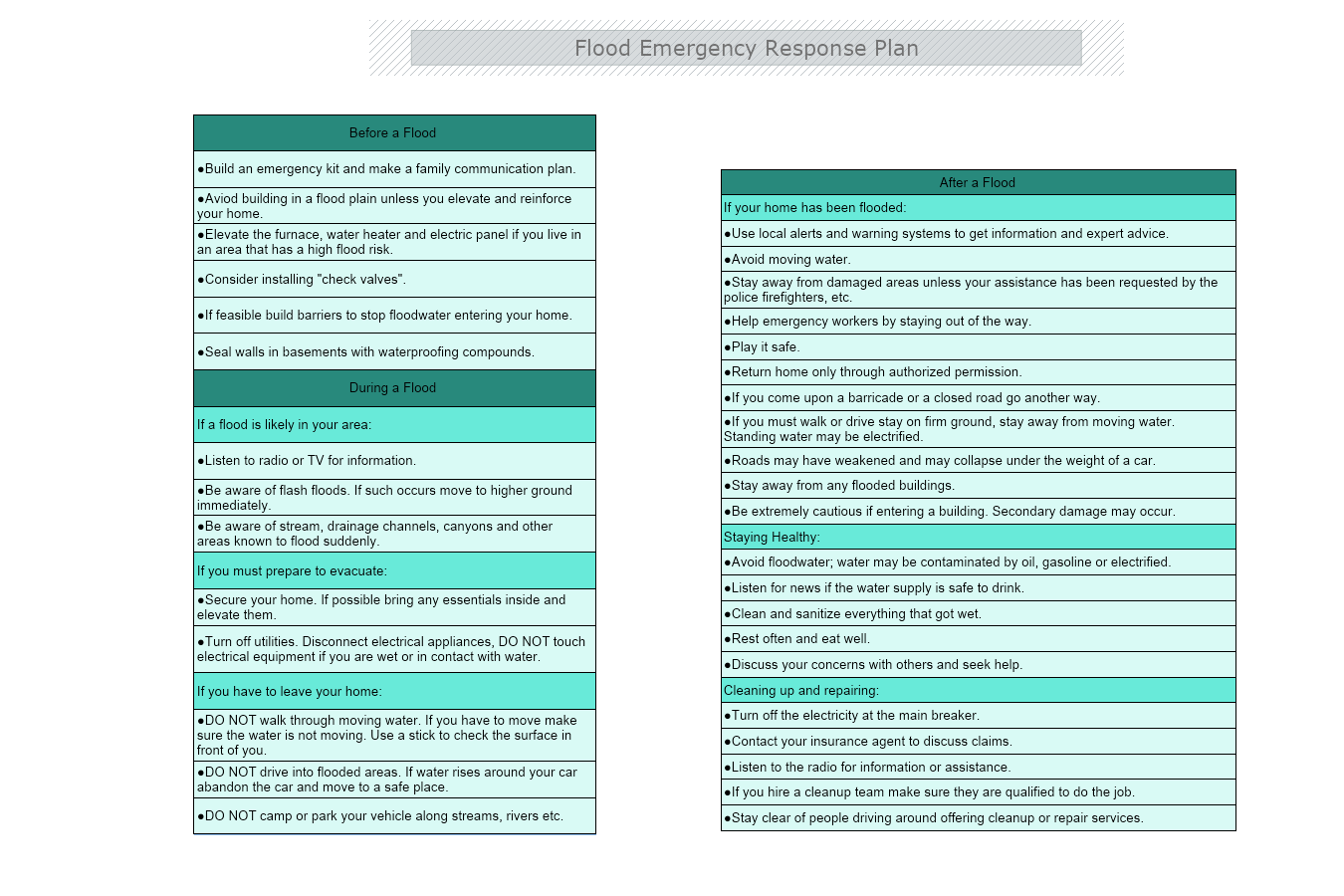This is a Flood Emergency Response Plan template that can be used for instructions on how to manage a flood emergency, examples of safety measures, and an emergency kit to prepare. The template is a 100% customizable and you can edit every aspect of it with a few simple clicks in MyDraw.
Download Template:


Download Template:



Floods are one of the most common and unpredictable natural disasters. Floods can cause a lot of damages to your household and business. This is why you need to make an emergency response plan in advance to reduce the risk of potential hazards.
How to prepare for a flood?
-
Find out if your home is located in a flash-flood-prone area or landslide-prone area.
-
Educate yourself and all family members on the community's emergency plans, warning signals, evacuation routes, and locations of emergency shelters.
-
Prepare and practice a flood evacuation route with your family. Reach out to an out-of-state relative or friend to be the "family contact" in case your family is separated during a flood.
- Emergency phone numbers.
- Inform local authorities about elderly or bedridden people, disability, etc.
- Make a list of potential home hazards before the flood strikes. Turn off electrical power when there is standing water, fallen power lines, etc. Also, turn off gas and water supplies before you evacuate.
- Have a fire extinguisher in your home and install sump pumps with backup power.
- Install backflow valves or plugs to prevent floodwaters from entering.
Emergency Supplies
-
Water bottles (about five gallons for each person).
-
Non-perishable food and a non-electric can opener.
- First aid kit and prescription medicines.
- Battery-powered radio, flashlights, and extra batteries.
- Sleeping bags or extra blankets.
- Personal toilet supplies.
- Rubber boots, sturdy shoes, and waterproof gloves.
- Emergency kit for car.
Evacuation Plan
- Check the vehicle's gas tank and make sure the emergency kit is in the car.
- Arrange family transportation, if no vehicle is available. Ask neighbors, friends to pick you up.
- Fill your clean water containers.
- Review emergency plans, supplies to make sure no items are missing.
- Listen to the weather updates over the radio or television.
- Listen for disaster sirens and warning signals.
- Adjust the thermostat on refrigerators and freezers to the coolest possible temperature.
